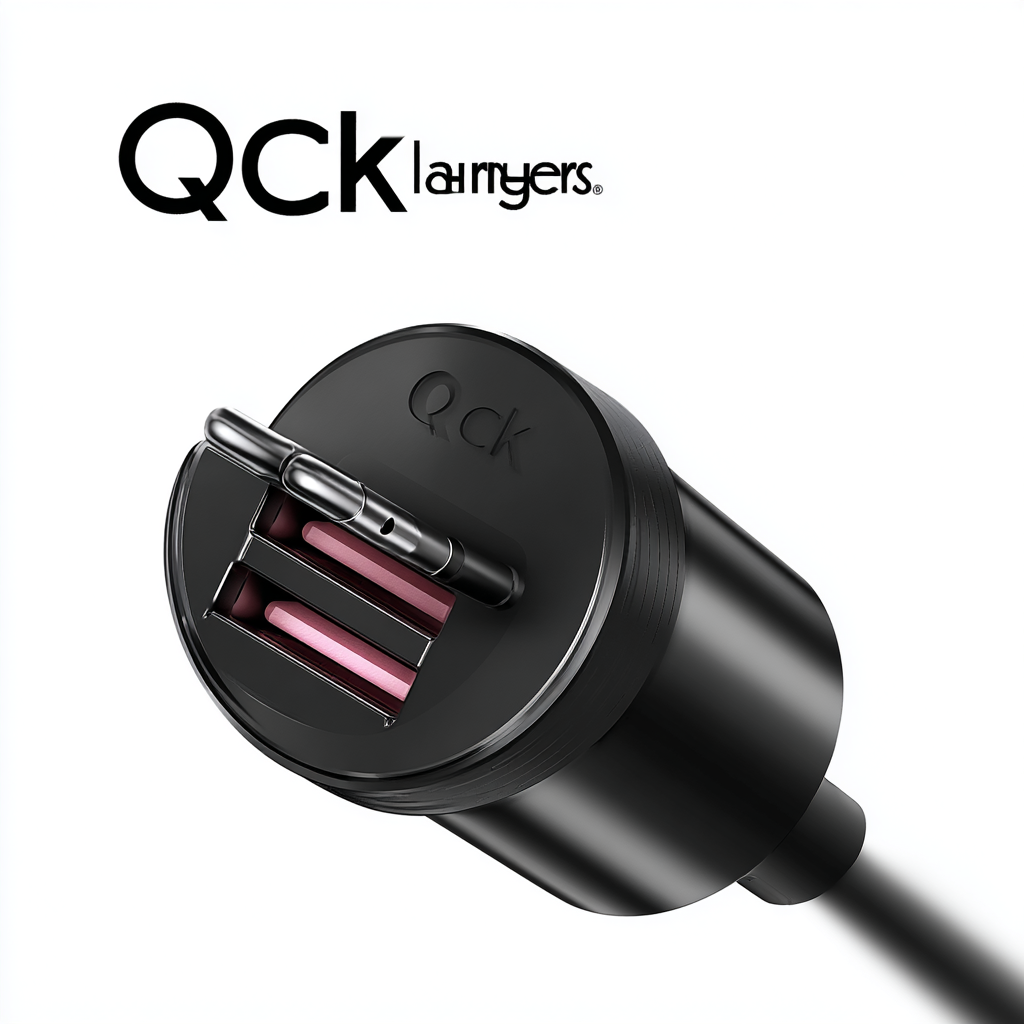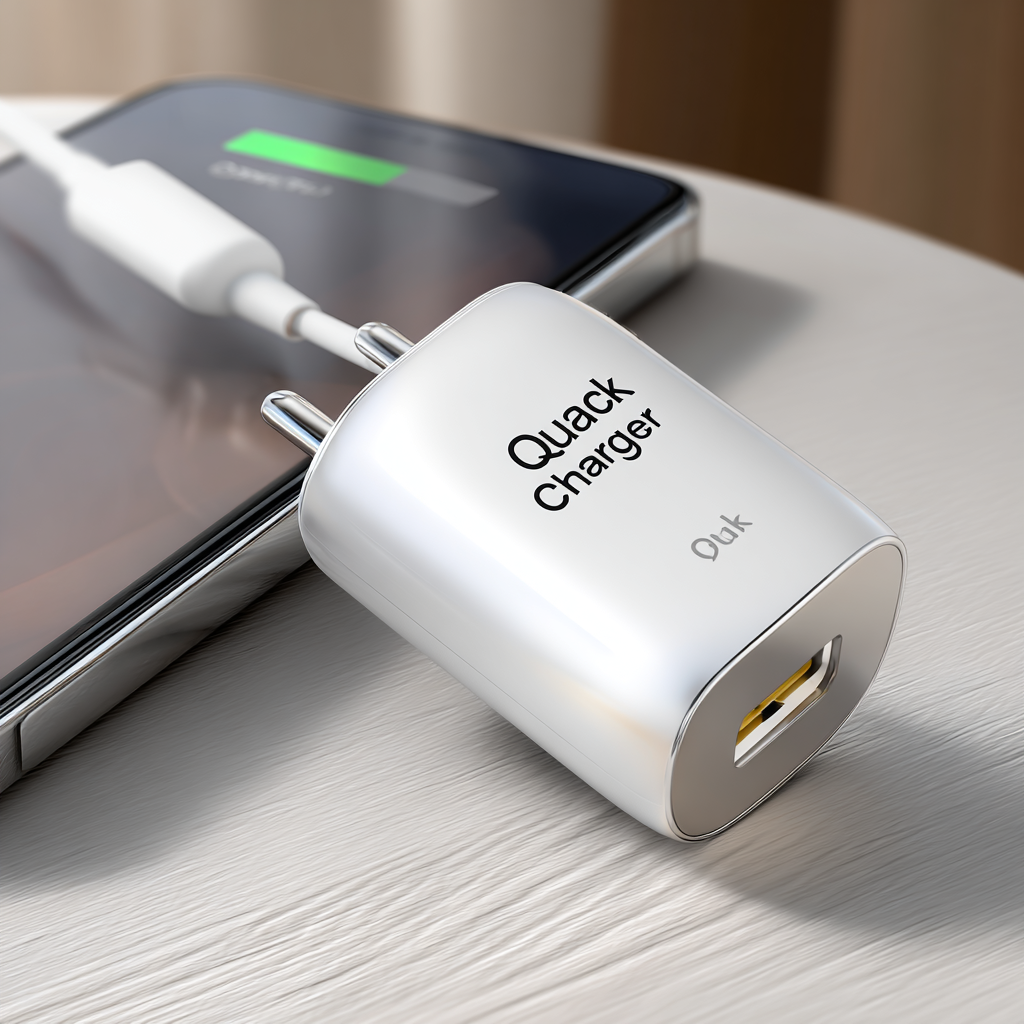Navigating Import Export Certifications for Best Quick Chargers in the Global Market
As the demand for faster charging solutions escalates globally, the quick charger market is projected to experience significant growth, with an estimated CAGR of 20% from 2023 to 2025, according to industry research. Quick chargers have become essential as consumers increasingly rely on smartphones, tablets, and electric vehicles, all of which require efficient power delivery systems.
 Navigating import and export certifications for these innovative devices is crucial for manufacturers aiming to penetrate the global market successfully. Compliance with international standards not only enhances product credibility but also opens doors to diverse markets.
Understanding the regulatory landscape, including safety and performance certifications, is imperative for businesses striving to position themselves competitively in this thriving sector. As we delve deeper into the complexities of the certification process, we will explore strategies that manufacturers can adopt to ensure their quick chargers meet industry standards and consumer expectations.
Navigating import and export certifications for these innovative devices is crucial for manufacturers aiming to penetrate the global market successfully. Compliance with international standards not only enhances product credibility but also opens doors to diverse markets.
Understanding the regulatory landscape, including safety and performance certifications, is imperative for businesses striving to position themselves competitively in this thriving sector. As we delve deeper into the complexities of the certification process, we will explore strategies that manufacturers can adopt to ensure their quick chargers meet industry standards and consumer expectations.
Understanding the Global Demand for Quick Chargers: Key Market Statistics
In recent years, the demand for quick chargers has surged significantly, driven by the proliferation of smartphones, tablets, and other portable electronic devices. Key market statistics reveal that the global quick charger market is expected to grow at an impressive compound annual growth rate (CAGR) of over 20% from 2023 to 2030. This growth is fueled by consumer preferences for faster charging solutions, which enhance the convenience of their tech-savvy lifestyles. Additionally, the rise of electric vehicles and the increasing number of devices requiring rapid power replenishment contribute to this upward trajectory.
Regionally, Asia-Pacific stands out as the dominant market for quick chargers, accounting for a substantial share due to its vast consumer electronics industry and high population density. Countries such as China and India are at the forefront, where a burgeoning middle class seeks reliable and efficient charging solutions. Meanwhile, North America and Europe are witnessing a steady increase in demand as consumers adopt newer technologies that require quick charging capabilities. With the evolution of technologies like USB Power Delivery and Quick Charge, manufacturers are innovating to meet the growing expectations of consumers around the world, marking a pivotal time for the global quick charger market.
Navigating Import Export Certifications for Best Quick Chargers in the Global Market - Understanding the Global Demand for Quick Chargers: Key Market Statistics
| Region | Market Size (USD billion) | Growth Rate (%) | Major Certification Standards | Import Duties (%) |
|---|---|---|---|---|
| North America | 12.5 | 8.5 | UL, FCC, CE | 5 |
| Europe | 10.2 | 7.2 | CE, RoHS | 3 |
| Asia-Pacific | 15.3 | 12.0 | CCC, BIS | 7 |
| Latin America | 3.8 | 6.5 | NOM, ANATEL | 10 |
| Middle East & Africa | 2.1 | 5.0 | SASO | 8 |
Essential Import Export Certifications for Quick Charger Compliance
In the rapidly evolving market of quick chargers, compliance with essential import-export certifications is crucial for manufacturers aiming to penetrate global markets. According to a recent report by MarketsandMarkets, the global market for quick chargers is expected to grow at a CAGR of 23.5%, reaching $38.5 billion by 2026. This surge highlights the importance of adhering to standards set by regulatory bodies, such as the IEC (International Electrotechnical Commission) and the CE (Conformité Européenne) mark, which ensure safety and efficiency in electrical devices.
One essential tip for companies is to familiarize themselves with the certification requirements specific to their target regions. For instance, the FCC (Federal Communications Commission) certification is mandatory for importation into the United States, while the CB (Certification Body) scheme is vital for accessing many international markets. Failure to obtain the necessary certifications can lead to costly delays and barriers to entry that could hinder a brand's competitive advantage.
Additionally, collaborating with experienced logistics partners who understand the certifications and regulations in various markets can streamline the export process. They can offer insights on documentation and compliance needs, reducing the risk of non-compliance. Keeping abreast of changes in regulations is equally important, as oversight can lead to significant fines and reputational damage.

Navigating Regulatory Standards: Comparisons Across Major Markets
Navigating the regulatory standards for import and export certifications in the quick charger market requires astute awareness of major markets' differing requirements. For instance, the U.S. market enforces stringent safety standards governed by the Underwriters Laboratories (UL) certification process, while the European market adheres to the CE marking regulations. Countries in Asia, particularly China, have begun to emphasize compliance with both national standards and international certifications, fostering a competitive landscape for quick charger manufacturers aiming for cross-border trade. According to recent reports, the global quick charger market is expected to grow at a CAGR of over 27% through 2025, highlighting the increasing importance of navigating these regulatory waters.

In response to rising consumer demand and regulatory pressures, companies in the quick charger sector must remain agile. As seen in various industries, such as fashion and luxury, adhering to new legal requirements and compliance standards has become non-negotiable. The ability to successfully navigate import/export certifications ensures not only market access but also builds consumer trust. In light of regulatory reforms and evolving market conditions, firms are encouraged to proactively engage in compliance strategies while keeping an eye on emerging trends. For example, the rise of sustainability as a critical business focus is reshaping regulatory expectations across all markets, further complicating the landscape for quick charger imports and exports.
Impact of Certification on Quick Charger Market Access and Sales Performance
In the fast-evolving world of quick chargers, certification plays a crucial role in determining market access and sales performance. Regulatory bodies around the globe mandate specific certifications to ensure that products meet safety and performance standards. Brands that invest in gaining these certifications not only enhance their credibility but also significantly improve their chances of entering competitive markets. A certified product signals to consumers that it has been tested and verified, potentially influencing purchasing decisions in a crowded market space.
Tip: To make the certification process smoother, manufacturers should start early in understanding the specific requirements for each target market. Collaborating with local experts can streamline compliance and avoid delays that might arise from missing documentation.
Furthermore, the impact of certification extends beyond just market access; it also influences consumer trust and, consequently, sales performance. Certified chargers are often perceived as higher quality, resulting in a willingness to pay a premium. Brands can leverage this perception through targeted marketing strategies that highlight their certified status.
Tip: Consider creating educational content that informs consumers about the importance of certification, helping them make informed purchasing decisions. This approach can foster brand loyalty and increase long-term sales.
Navigating Import Export Certifications for Best Quick Chargers in the Global Market
This chart illustrates the impact of various import-export certifications on sales performance of quick chargers. The x-axis represents different certifications, while the y-axis reflects estimated sales performance in percentage.
Future Trends in Certification for Quick Charging Technology Industry
The quick charging technology industry is rapidly evolving, driven by increasing consumer demand for faster and more efficient charging solutions. According to a report by ResearchAndMarkets, the global quick charge technology market is projected to grow from $15.5 billion in 2021 to over $30 billion by 2026, with a compound annual growth rate (CAGR) of 14%. This growth not only underscores the importance of quick chargers but also highlights the need for stringent certification processes to ensure safety and performance in a diverse global market.
As the industry matures, trends in certification are shifting towards more stringent standards. Organizations like the Institute of Electrical and Electronics Engineers (IEEE) are adopting new guidelines that emphasize interoperability and safety. Emerging markets are also beginning to recognize the importance of certifications, with countries such as India and Brazil implementing local standards that align with international guidelines. With these evolving trends, manufacturers must stay abreast of the certification landscape to successfully navigate the complexities of global trade and ensure their products are compliant with both regional and international regulations.
